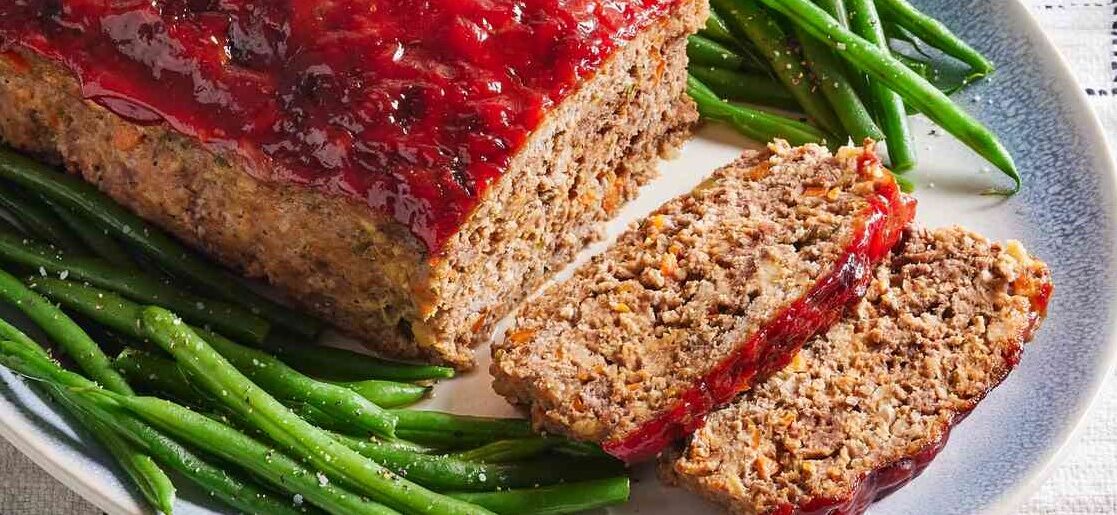Meatloaf has long held a cherished place in the realm of comfort foods, serving as a hearty meal for families around the globe. Its storied origins trace back to the early 5th century, and variations of this dish can be found in numerous cultures. Traditionally made from ground meat mixed with various seasonings, fillers, and sauces, meatloaf showcases the essence of home-cooked meals. The combination of flavor, texture, and warmth it provides has made it a favorite choice for lunch and dinner alike.
The significance of meatloaf extends beyond its delicious taste; it embodies the spirit of family gatherings and shared moments. In many households, the preparation of meatloaf has been passed down through generations, with families gathering in the kitchen to blend ingredients and forge memories. This dish not only nourishes the body but also offers an opportunity to connect with loved ones, making it a staple in many kitchens.
One of the most appealing aspects of meatloaf is its versatility. Chefs can customize this classic dish to reflect their individual preferences or culinary creativity. By incorporating various ingredients such as vegetables, herbs, cheeses, and spices, meatloaf can be transformed into a personalized delight. For example, adding sautéed onions or bell peppers can infuse the loaf with added flavor and nutrition. Additionally, substituting the traditional ground beef with turkey, chicken, or even plant-based alternatives opens up a world of possibilities, appealing to diverse dietary choices.
Whether served warm right out of the oven or as cold slices in a sandwich, meatloaf remains a delicious option for any meal. As we explore our delightful meatloaf recipe, we celebrate this comfort food classic and its ability to cater to varying tastes and preferences, making it an enduring favorite for lunch across many households.
Essential Ingredients for a Mouthwatering Meatloaf
Creating a delectable meatloaf begins with the selection of high-quality ingredients. The cornerstone of any meatloaf is its meat. Common choices include ground beef, turkey, and pork, each lending a unique flavor and texture to the dish. Ground beef is particularly popular, as it provides a rich taste and juicy consistency. Turkey offers a leaner alternative, while ground pork can add moisture and sweetness. A combination of these meats can also enhance flavor complexity.
Binders play a crucial role in holding the meatloaf together while contributing to its moisture and texture. Traditional options such as breadcrumbs or rolled oats are widely used. Breadcrumbs absorb the juices, resulting in a tender loaf, while oats offer a heartier texture and additional nutritional benefits, including fiber.
Seasonings are essential for elevating the flavor profile of the meatloaf. A base of salt and pepper is fundamental, but it’s advisable to consider the inclusion of aromatic ingredients such as garlic powder, onion powder, and Worcestershire sauce. These enhance the savory notes of the meat, making the meatloaf more appealing. Fresh herbs such as parsley, thyme, or rosemary can also be integrated for added freshness and complexity.
Many cooks opt to incorporate vegetables such as bell peppers, carrots, or celery. These ingredients not only add moisture and sweetness but also increase the dish’s nutritional value. For those seeking to enhance their meatloaf’s flavor even further, consider including shredded cheese or eggs, which can provide additional richness and binding properties.
When selecting ingredients, prioritize freshness and quality. Fresh herbs and seasonal vegetables ensure that your meatloaf is full of vibrant flavors. By carefully choosing these essential components, you can create a meatloaf that is both satisfying and nutritious, apt for any lunch table.
Step-by-Step Meatloaf Preparation and Cooking Instructions
Preparing a delicious meatloaf begins with gathering the necessary ingredients. Take ground meat as the primary component, typically either beef, pork, or a combination, alongside breadcrumbs, eggs, and seasonings such as salt, pepper, garlic powder, and onion powder. Fresh herbs like parsley can also enhance the flavor profile. Begin by preheating your oven to 350°F (175°C) to ensure it is at an optimal temperature for cooking.
In a large mixing bowl, combine the ground meat with breadcrumbs and beaten eggs. The breadcrumbs serve as a binding agent, while the eggs add moisture to the mixture. Stir in your chosen seasonings, ensuring an even distribution to achieve a flavorful outcome. This is the time to get creative; consider incorporating chopped vegetables, such as onions or bell peppers, for added moisture and depth of flavor.
Once all ingredients are well-combined, shape the meat mixture into a loaf form. Ensure that it is compact and well-formed to prevent it from falling apart during the cooking process. Placing the shaped meatloaf on a lined baking sheet or in a loaf pan will help in managing the grease that forms during cooking. If desired, a glaze made from ketchup or barbecue sauce can be spread on top for an extra touch of taste.
For cooking, place the meatloaf in the preheated oven and bake for around 60 to 75 minutes. To confirm doneness, use a meat thermometer inserted into the center; the internal temperature should reach 160°F (70°C). For the final ten minutes of baking, consider raising the oven temperature to create a caramelized crust without compromising the moisture inside. Once out of the oven, allow the meatloaf to rest for about ten minutes before slicing, which helps retain juices and promotes optimal flavor for your lunch.
Serving Suggestions and Storage Tips
To elevate your meatloaf experience, choosing the right side dishes is essential. Classic pairings such as creamy mashed potatoes, buttery corn, or tangy coleslaw can enhance the overall meal. A refreshing green salad, perhaps with a zesty vinaigrette, adds a vibrant contrast to the rich flavors of the meatloaf. For a heartier option, consider serving it alongside roasted vegetables or baked beans, as these can round out the meal splendidly.
When it comes to storing leftover meatloaf, proper techniques are crucial to maintain its moistness and flavor. If you have extra portions, allow the meatloaf to cool to room temperature before refrigeration. Wrap it tightly in plastic wrap or aluminum foil, or store it in an airtight container to prevent it from drying out. Leftover meatloaf can be preserved in the refrigerator for up to four days. For longer storage, consider freezing individual slices or portions. Place them in freezer-safe containers or wrap them in plastic, ensuring as much air as possible is removed to avoid freezer burn. You can save Meatloaf in the freezer for up to three months.
Reheating leftover meatloaf requires attention to detail to retain taste and texture. The best method is to use an oven, as this allows the meatloaf to reheat evenly. Preheat the oven to 350°F (175°C), place the slice on a baking sheet, and cover it with aluminum foil to prevent it from drying out. Heat for about 15-20 minutes or until warm throughout. An alternative for quicker reheating is the microwave; place a slice in a microwave-safe dish, add a splash of broth or water, cover, and heat in short intervals until cooked through.
Finally, don’t hesitate to get creative with any remaining meatloaf. It can be transformed into delicious meatloaf sandwiches, incorporated into hash, or even diced and added to pasta sauces, making it a versatile ingredient that minimizes waste and maximizes flavor.

